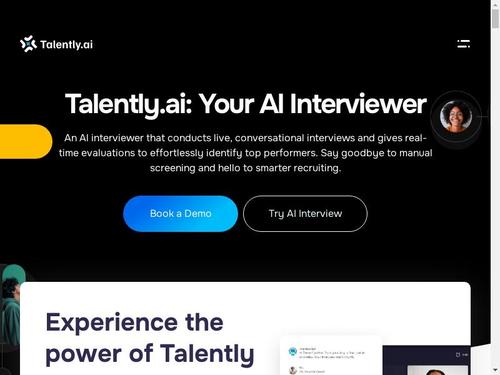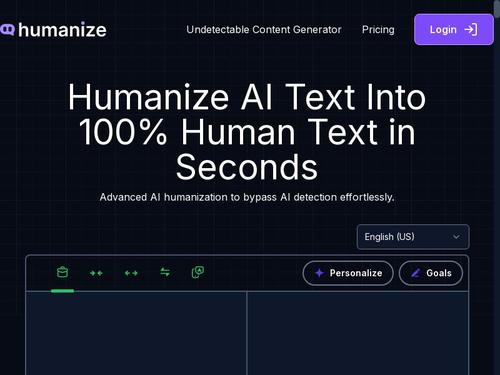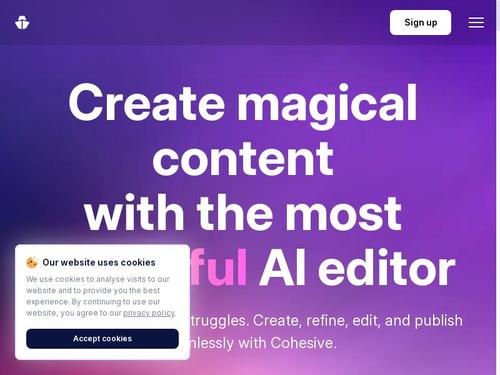- You are here:
- Home »
- AI Tool Reviews
Category Archives for AI Tool Reviews

Onboard AI Review
In the rapidly evolving world of software development, Artificial Intelligence (AI) tools have become indispensable allies for programmers, transforming how code is written, reviewed, and optimized. Among the latest innovations in this space is Onboard AI, a cutting-edge AI coding tool designed to enhance productivity and streamline coding workflows. This review delves into Onboard AI’s […]
Continue reading
AI Landing Page Builder Review
In the fast-evolving digital landscape, crafting a compelling online presence has never been more crucial for businesses and individuals alike. Enter AI website builders: sophisticated tools designed to streamline the process of creating professional, eye-catching websites with minimal effort. Among these innovations, the AI Landing Page Builder stands out as a game-changer, offering tailored solutions […]
Continue reading
Talently AI Review
AI-driven recruitment tools have become essential in modern hiring processes, streamlining talent acquisition and enhancing decision-making. Talently AI is one such platform, designed to help companies identify, evaluate, and recruit top talent more efficiently. With its advanced algorithms and data-driven approach, Talently AI aims to simplify the recruitment process by automating tasks like candidate screening, […]
Continue readingHumanize AI Text Review
In the rapidly evolving landscape of artificial intelligence, the ability to effectively communicate ideas remains a cornerstone of progress. One area of significant advancement is the development of AI paraphrasing tools, designed to refine and humanize machine-generated text. These tools offer a sophisticated means of rephrasing content, ensuring that it resonates more naturally with human […]
Continue reading
Homework AI Review
In the rapidly evolving landscape of education technology, AI-driven tools are transforming traditional learning methods, offering new ways to support students’ academic journeys. Among these innovations, Homework AI stands out as a cutting-edge educational tool designed to assist students with their homework. By leveraging sophisticated algorithms and machine learning, Homework AI aims to provide personalized […]
Continue reading
Mistral.ai Review
In the rapidly evolving landscape of artificial intelligence, AI writing tools have become indispensable assets for content creators, businesses, and individuals alike. Among the burgeoning array of options available, Mistral.ai has emerged as a prominent player, promising to revolutionize the way we approach writing tasks. This review delves into the capabilities and features of Mistral.ai, […]
Continue reading
Humanize AI Review
In an era where artificial intelligence continues to reshape industries and redefine capabilities, the role of AI in writing has emerged as a particularly fascinating development. The concept of humanizing AI, especially in the realm of writing, raises crucial questions about how technology can emulate human creativity and expression. As AI tools become increasingly sophisticated, […]
Continue readingNoah AI Review
As artificial intelligence continues to revolutionize various industries, the world of writing is no exception. Among the latest innovations in AI-assisted content creation is Noah AI, a cutting-edge tool designed to enhance productivity and creativity for writers, marketers, and content creators. Noah AI promises to transform how we approach writing tasks by leveraging advanced algorithms […]
Continue reading
Cohesive AI Review
In the ever-evolving landscape of artificial intelligence, AI writing tools have emerged as transformative assets for content creators, businesses, and individuals alike. One standout contender in this field is Cohesive AI, a platform designed to streamline and enhance the writing process through advanced algorithms and intuitive features. This review delves into Cohesive AI’s capabilities, evaluating […]
Continue reading
Journalist AI Review
In an era where artificial intelligence is revolutionizing numerous industries, journalism stands at the cusp of a transformative shift driven by AI-powered writing tools. The integration of AI writers into newsrooms and content creation processes has sparked both excitement and skepticism. This article delves into the impact of AI on journalism, with a specific focus […]
Continue reading